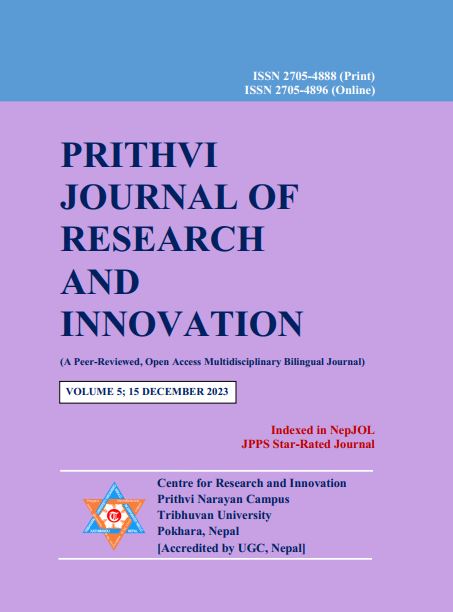Evaluation of Antioxidant Capacity of Methanol Extracts of Leaf and Stem Bark of Tinospora Cordifolia
DOI:
https://doi.org/10.3126/pjri.v5i1.60696Keywords:
Tinospora cordifolia, phenolics and flavonoids content, antioxidantAbstract
Conventionally used herbs are the major sources of biologically active phytoconstituents that are extensively used for the management of several health complications particularly in developing countries. Tinospora cordifolia, locally known as Gurjo, is one of the most widely utilized medicinal plants in Nepal. This study was carried out on quantifying the total phenolic and flavonoid contents, and evaluating antioxidant potential of the methanolic extracts of stem barks and leaf of a wild plant collected from Rupa Village of Kaski District of Nepal. The Folin-Ciocalteu reagent (FCR) method showed a total phenolic content of 50.84 ± 0.38 and 41.39 ± 0.44 mg GAE/g in the extracts of stem barks and leaves respectively. The AlCl3-based colorimetric method showed the total flavonoid contents of 27.44 ± 0.68 mg QE/g in stem barks and 18.44 ± 0.25 mg QE/g in the leaves extract. Besides, the antioxidant activity was evaluated by 2, 2-diphenyl-1-picrylhydrazyl (DPPH) method. The stem bark exhibited higher antioxidant activity (IC50 = 36.50 ± 0.79 µg/mL) than that of the leaf extract (IC50 = 50.77 ± 1.29 µg/mL), as compared to the standard ascorbic acid (IC50 = 10.82 ± 0.04 µg/mL). These findings validate the traditional practice of using the plant, underscore the existence of a diverse range of bioactive compounds, and highlight the necessity for further investigations into its potential health benefits.
Downloads
Downloads
Published
How to Cite
Issue
Section
License

This work is licensed under a Creative Commons Attribution-NonCommercial 4.0 International License.
© Centre for Research and Innovation (CRI), Prithvi Narayan Campus (TU)

